A Complete Guide To B2B SaaS Lead Generation
To use what is probably an over-used analogy, leads are the fuel of any growing B2B business. It’s a pretty handy analogy because like a vehicle, no matter how expensive, beautiful or well structured it is, without fuel it’s not going anywhere. B2B SaaS lead generation should be a well-oiled machine.
Once topped up, the most efficient ones will go further on less and the ones with the best engines will get to their destination faster. In this article, we’ll talk about some of the ways you can fuel your business with leads and make sure you put some of the basic foundations in place so that you make the most out of that fuel.
B2B SaaS Lead Generation is probably the most important part of any B2B marketers job. If you aren’t generating leads, you’re not generating business and the company isn’t growing. Sales & Marketing teams are often blended in growing B2B technology businesses because Lead Generation is such a core competency.
53% of marketers say half or more of their budget is allocated to lead generation, while 34% say less than half of their budget is allocated to lead generation.
What is a lead?
A lead is a person or a company that has shown interest in your companies product or service. This could be classified a number of ways, such as: attending an event you ran, filling in a form on your website, speaking to someone at your business or clicking on an online ad you ran.
As a digital marketing agency, we’re going to approach this from a digital marketing perspective, so we won’t be covering event marketing and direct mail in this article, although both are still very important.

How much to spend on B2B SaaS lead generation
How much is a new client worth to your business in revenue? An excellent place to start with any B2B SaaS lead generation strategy is discovering how much a client is worth to your business. This is called the Customer Lifetime Value (LTV). LTV tells companies how much revenue they can expect one customer to generate over the course of the business relationship.
<em>LTV = Average Monthly or Yearly Revenue per customer x Number of Months or Years they are a customer</em>.
Depending on your pricing and business model, you may charge annually, monthly or a combination of both, so you need to adjust accordingly. SaaS companies do this a little bit differently – there’s a useful article written about it here that will go into more detail on it.
The next thing is to calculate the cost of acquisition per customer (CAC). CAC is basically the amount of money you spend in total through sales and marketing to acquire a customer. This includes salary, tools and spend. It is a high-level metric that not all marketers will be able to calculate without input from the leadership team.
<em>CAC = Sales Costs + Marketing Costs / # of new customers</em>
By calculating this you can start to estimate how much you should be spending to acquire one client/customer. For example, it wouldn’t make sense to be spending £100 on trying to acquire a customer worth £100k to your business, you’re probably under-investing and will likely miss out on opportunities to competitors who are spending more money.
Everyone wants to spend as little as possible for a lead, but, if you under invest in B2B SaaS lead generation you will not grow as quickly as you could be and will possibly lose out to your close competition.
Calculating your LTV:CAC Ratio
This is the ratio that is used a lot in SaaS businesses to gauge growth. The recommended ratio is 3:1, so a client with LTV of £100k you would spend roughly around £33k in sales and marketing costs to acquire them.
<em>LTV:CAC Ratio = LTV / CAC</em>
It is argued that a higher ratio of say 5:1 is not necessarily desirable because it means that although you are very profitable you are perhaps not growing as fast as you could be. Personally I think each situation is different here and it depends on the product or service.
A lot of SaaS businesses will constantly track their LTV:CAC ratio so they can see their monthly performance.
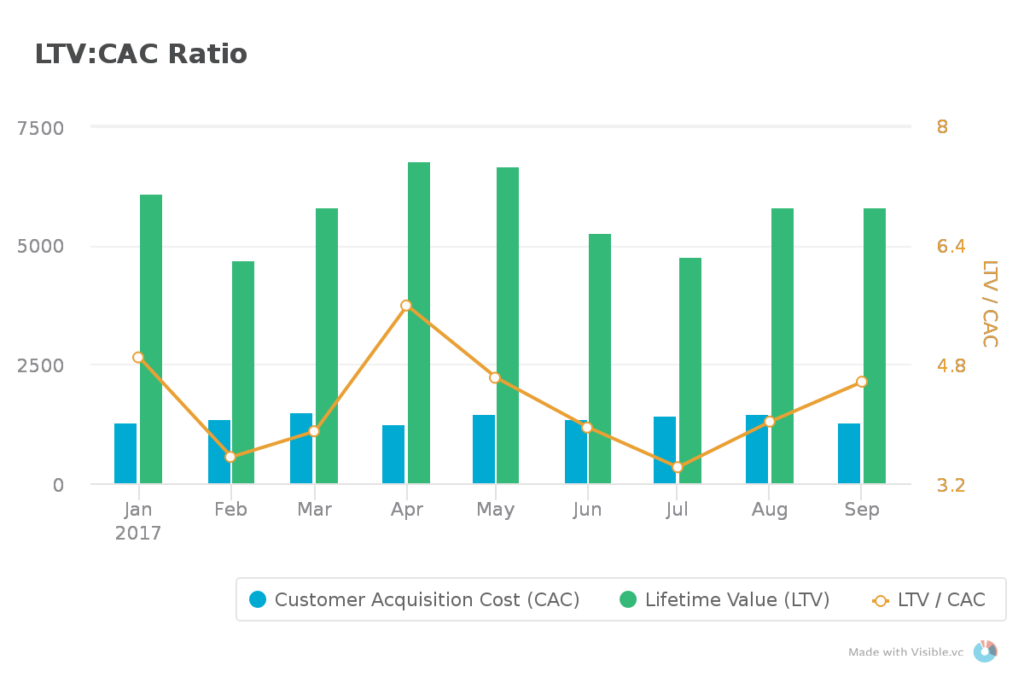
Use LTV as a guide
The benefit of using this type of calculation is that it provides a top level view of budgets. Often it can be hard for a marketer to justify the spend to the leadership team. I would recommend using LTV as a guide to get an idea of where you sit, you can then estimate what kind of investment would be prudent.
Calculating Cost Per Lead (CPL)
Cost Per Lead (CPL) is an essential metric to help you track the ROI of your B2B SaaS lead generation strategy. It’s probably the thing used most often to keep track of the success of any lead-generating campaign alongside the number of leads generated.
Cost Per Lead = Spend / # of leads generated
E.g. £1,000 Spent on Lead Generation / 10 leads Generated = CPL of £100
You should calculate your overall cost per lead, which is all your digital marketing channels combined and also individual cost per lead for each channel. This means you can see which channel is most effective in terms of cost.
Below is some data from a while ago but still relevant. If you are wondering why Inbound Marketing is so popular in growing businesses, this graph showing cost per lead pretty much explains it.
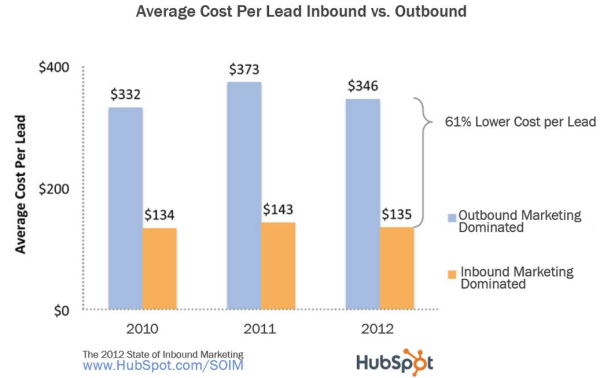
Tracking the ROI of B2B SaaS lead generation
Now the spanner in the works here is that in the large percentage of B2B technology businesses the sales cycle can be very long, months and years sometimes. It is very rare in a lot of technology B2B companies that a lead comes in and closes in the same month (SaaS is a little different sometimes).
There is a really useful bit of research here that was done by a company called Implisit. Showing an average conversion rate of 13% from lead to opportunity and the time taken is around 84 days, so around 3 months.
Benchmarking Conversion Rates for B2B Tech
It’s best to benchmark conversion rates against your own performance rather than looking at what everyone else is doing, if you take 3% as good then you will never strive too much for 5% never mind 10%.
The best way to approach this for a Marketer is to try and take a more top-level view of your conversion rates and pipeline over a longer period of time. So rather than tracking conversion over the month, track it over the year or the quarter depending on time frames.
At Clarity Performance we focus on MQLs, Marketing Qualified Leads. Everything we do points back to this metric and the goal of increasing them.
The underlying principle of what we do is to try to be as efficient as possible by achieving and maintaining high conversion rates first and then scaling using relevant tactics.
Everything you do as a B2B marketer should be working towards increasing the number of MQLs. This includes a new set of brand guidelines that will impact on conversion rates.
We track 5 KPIs that help is set benchmarks and decide what to do next. It also helps us track conversion rates at a high level.
| The 5 KPIs | Benchmark | x2 |
|---|---|---|
| # of web visits | 1,000 | 2,000 |
| % of web visits to leads | 4% | 4% |
| # of Web Leads | 40 | 80 |
| % of leads that are MQLs | 25% | 25% |
| # of MQLs | 10 | 20 |
How to Qualify Leads
Qualifying basically means figuring out whether or not they are a good match for your product or service. Do they meet the criteria required to be classed as a lead?
With B2B SaaS lead generation, there are some standard names for the different stages a lead goes through before that person hopefully turns into a customer. An example of the lead stages or lifecycle stages can be seen in the below table.
| Lead | MQL | SQL | Opportunity | Customer |
| Submitted Info | Meets ICP | Ability to Purchase | Opportunity for deal | Deal Closed Won |
MQL = Marketing Qualified Lead
SQL = Sales Qualified Lead
ICP = Ideal Client Profile
What is a Marketing Qualified Lead?
A Marketing Qualified Lead is an official way of describing what is often described as a ‘good lead’ by your sales team. It’s a lead that fits your ideal client profile. You’ll need to collect enough information about a lead to qualify whether or not they meet the ICP criteria. This could simply be achieved by a form on your website.
33% of demand generation professionals say that generation of MQLs is their primary metric for success. (Demand Gen Report, 2018)
What is an Ideal Client Profile (ICP)?
An ideal client profile is your ideal customer, your target audience. What is the best fit type of business for you? An example ICP could be an SME with a turnover of at least £4million based in the UK. You’ll discover that your own ICP will have some more specific information on it relating to your product or service (depending on your niche).
Your understanding of your ICP will develop over time, you often won’t know until having some bad fit clients which ones are actually the best for your business.
What is a Sales Qualified Lead?
A Sales Qualified Lead is a lead that is in the next stage of decision making from just a Marketing Qualified Lead. This means they are willing to consider a purchase. An indication that a lead is Sales Qualified would be if they held a call for a member of the sales team.
What is an Opportunity?
An opportunity is different from a Sales Qualified Lead because they have shown an indication of an opportunity for a specific deal, at this point, usually, the deal has an estimated value to your business. An Opportunity has usually already had a call with a member of the sales team and has discussed budgets etc.
Leads vs Opportunities
The difference between a lead and an opportunity is that a lead is a contact who has shown interest in your business. An opportunity means there is a potential for a deal to be made, and this relies on a number of conditions to be met.
Lead Scoring & Automatic Qualification
Once you have defined what your different lead stages are you can start to implement forms of marketing automation to automatically set the status of a lead to an MQL or SQL.
An example of this would be to have certain forms on your website that are MQL Forms. These are forms that require more information to be submitted by the contact, ideally, it is all the information you need to be able to automatically qualify them.
Another way would be to set conditions that if met then the leads status is changed automatically by the CRM to the next stage in the pipeline.
Applying this sort of automation is a form of Lead Scoring.
What is Lead Scoring?
Lead scoring is the process of ranking leads in your CRM system so that your sales & marketing teams can prioritise working on them. Usually, a scoring system is aligned to your Ideal Client Profile (ICP) and their behaviour or engagement with your business.
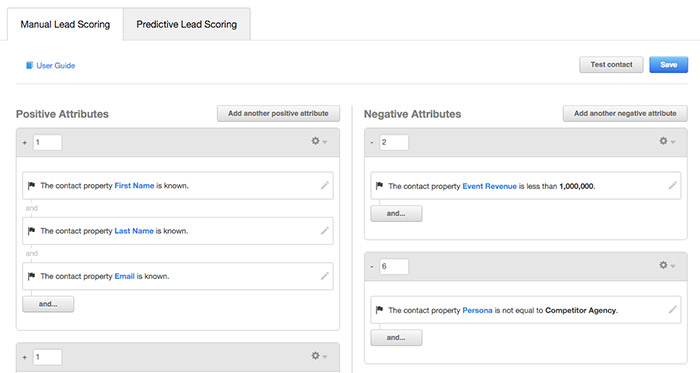
An example of a lead scoring points system could be as follows:
Demographic Criteria
| Data Field | Condition | Score |
| Company Revenue | > £10million | +5 |
| Employees | 50+ | +5 |
| Country | France | -1 |
| Job Title | Marketing Assistant | -2 |
Behavioural Criteria
| Data Field | Condition | Score |
| Email Opens | +2 | +5 |
| Web Pages Visited | 10+ | +5 |
| Form Submissions | 1+ | +5 |
Lead scoring can be complex and some CRM systems automatically score leads based on certain conditions for you. This sort of points-based system is likely to become out of date very quickly because of A.I.
Automating lead qualification based on scores
If you decide to use Lead Scoring and have a set of Lead Qualification Criteria the next step is to match the two up so that a certain threshold of points changes lead to an MQL and an MQL to SQL etc.
| Lead Score | Lead Stage |
| > 10 | Lead |
| 10 – 20 | MQL |
| 20 – 30 | SQL |
| 30 – 40 | Opportunity |
Should I use Lead Scoring?
Lead scoring is only recommended if you first have a well-structured CRM system with accurate data. Without these two things as a foundation, you will not be able to accurately score your leads, this is because points are usually awarded based on the data you gather.
Most B2B tech businesses will not need to use lead scoring. Unless you are getting hundreds or thousands of leads a month then it probably isn’t worth the time setting up.
There are short version of Lead Scoring you can implement which is simply just assigning a lead stage based on demographics and behavioural as mentioned earlier.
Sales & Marketing Alignment
Lead Generation is where sales and marketing find themselves crossing over the most in a growing B2B business. When a sales team is incentivised by commission and they don’t have enough leads to work, tensions can arise, especially if a marketing manager is brought in generating more leads and not a lot is happening – or not enough.
40% of salespeople still use informal means such as Microsoft Excel or Outlook to store lead and customer data. (HubSpot, 2016)
The Lead Handover Process
After agreeing on the lead qualification criteria, the next thing that requires sales and marketing to be aligned on is the lead handover process. This is where you decide between each other what marketing will do to work leads and what sales will do. Here is an interesting article written specifically on the lead handover process between sales and marketing.
Things to consider when mapping out a lead handover process is the frequency and number of leads. It’s not really sensible to put an official handover process in place if you only get 4 leads a week, at this point you can treat each lead like royalty.
Here is an example of what each team might do at the different qualification stages. Again if you are getting only a handful of leads each week then this isn’t applicable, but it is required when you start to scale.
| Stage | Lead | MQL | SQL | Opportunity | Customer | Evangelist |
| Criteria | Submitted Info | Meets ICP | Ability to Purchase | Opportunity for deal | Deal Closed Won | |
| Sales | No Action | Make Contact | Sales Activity | Sales Activity | Handover to Customer Success & Marketing | |
| Marketing | Lead Nurturing | Lead Nurturing |
What is lead Nurturing?
Lead nurturing happens when the lead is not sales-ready. They basically go back into the virtual pot and are “nurtured’ by the marketing team (sales too) until they are ready to buy from you.
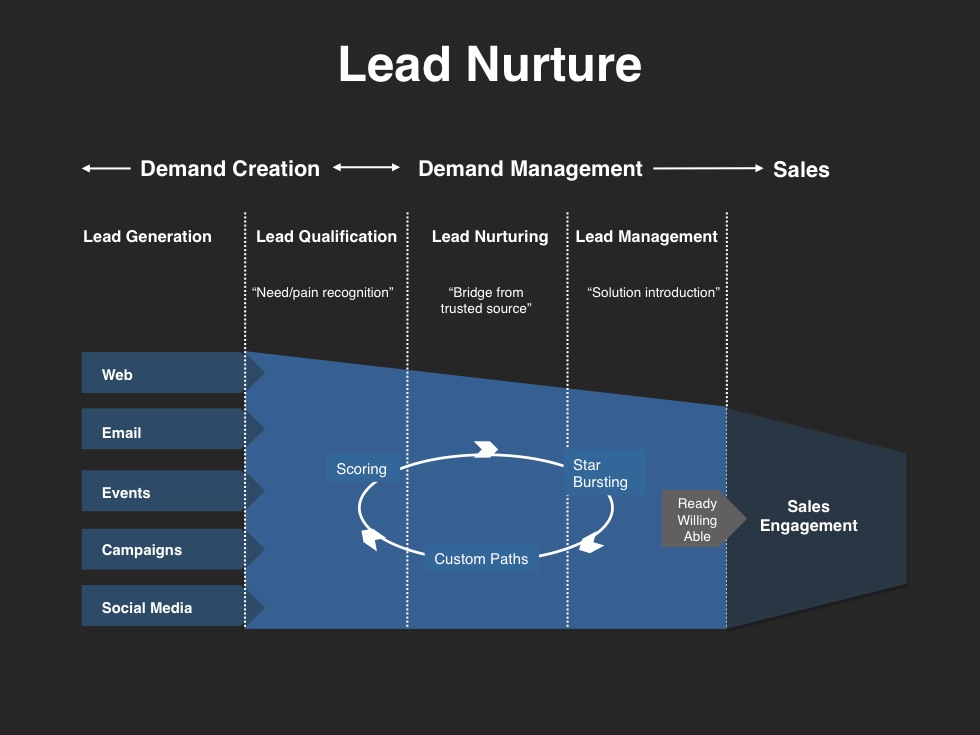
Sales, Marketing & Customer Success
Sales and Marketing have been joined by a new partner in crime, customer success. The friendly face of many of B2B tech business. Lead generation doesn’t stop when a lead becomes a customer, turning your customers into advocates and providing you with referrals is the next stage of lead generation.
Set up your CRM for Lead Generation
Before you turn on the tap, it’s important to make sure you are ready for the potential influx of data. This is usually an afterthought as people learn as they go. The typical learning cycle for this looks something like this.
| Phase 1 | Generating more leads through the website and digital marketing |
| Phase 2 | Leads go into your CRM system/database |
| Phase 3 | Want to be more targeted in marketing efforts to database |
| Phase 4 | Realise data is not accurate enough to personalise messages |
| Phase 5 | Work done to try and fix data |
| Phase 6 | Attempt more targeted marketing messaging |
Things you need to consider when setting up your CRM system for B2B SaaS lead generation.
- What data do you want to collect?
- How can you standardise the data input – i.e minimal free text fields.
- How do you want to segment your database?
Tracking Lead Source & Attribution in your CRM
One of the most important parts of B2B digital marketing is being to track what worked and what didn’t when it comes to lead generating strategies. As a starting point, you should be able to track the point of conversion for a new lead, whether it’s attending an event, downloading a white paper or requesting a demo on your website.
Most of the main CRM systems have a form of lead source tracking built into them already and if you integrate your website with a system like HubSpot – you will be able to track which form was filled in.
The stage before that is what I would call campaign tracking. This is when you may run some external lead generation activities like PPC and you want to track which ad lead the person to then fill in a form.
HubSpot has a more than capable tracking system setup that you connect into your LinkedIn, Google and Facebook Ad platforms.
Here are some useful articles on setting up tracking and attribution in relevant CRMs
- Setting up Ad tracking in HubSpot CRM
- How to set up revenue attribution for digital advertising channels and campaigns in Marketo
- Attribution modelling using Salesforce and Pardot
The purpose of marketing attribution or multi-touch attribution is to quantify the influence each advertising impression has on a consumer’s decision to make a purchase decision, or convert.
How can I generate more leads?
Every marketer I have ever met has always wanted to generate more leads, there are very few situations where you say, actually, no I’m ok thanks. Lead generation is the driving force behind most growth in small B2B businesses. It can often be the hardest bit of the job, but once you can predictably generate enough leads for your business, your job becomes a lot easier.
Predictable B2B SaaS lead generation
Predictable B2B lead generation means you know roughly how many leads you are going to generate each day, week, month and year. When predictable lead generation matched with consistent conversion rates means you can start to accurately predict business growth and the investment required to grow.
How to build a predictable lead pipeline
Building a predictable lead generation strategy requires a mix of channels. Think of it as hedging your bets, if one dips the others can cover the losses. The biggest mistake most marketers make when it comes to B2B SaaS lead generation is an over-reliance on one tactic that they have previously used.
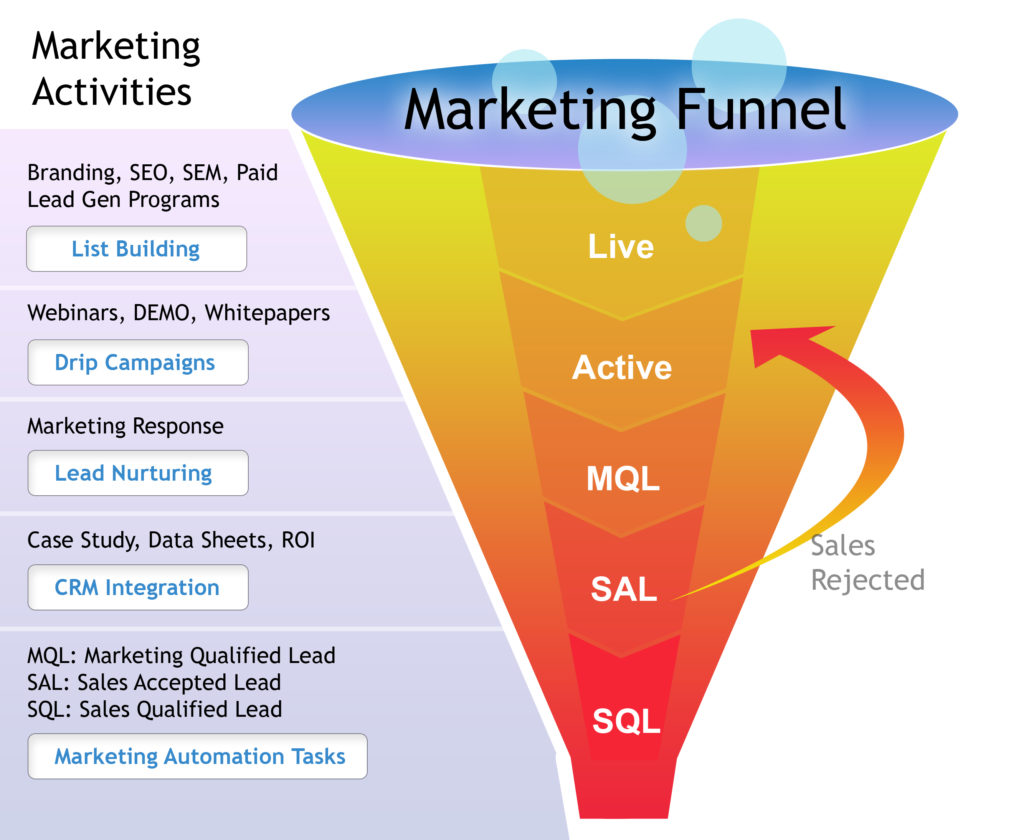
There are some key things you need to do to start building a predictable lead generation strategy.
- Discover the channels that work for you
- Measure your cost per lead for each channel
- Invest in the long-term and the short-term
How to discover the channels that work for you
The first step here is buyer personas. A buyer persona is an imaginary person that represents a typical buyer of your product or service. Usually, a B2B business will have 3 buyer personas as a starting point.
The reason a Buyer Persona is essential for discovering the channels that will work for you is because it makes you document ‘where the buyers are’. What are the communication channels they use, what are the demographics?
Getting this information means you can start to target your ideal audience. You combine your Buyer Personas with your Ideal Client Profile to build out your targeting.
For example, if your persona is a 25-year-old fashion buyer living in London, you may discover they are using SnapChat, Instagram and read certain blogs or follow certain YouTube Channels. You can then build a picture of how to reach them.
I’m not going to list out the channels that you can use as they are fairly endless and ever-growing. By doing the Buyer Persona work you will find the channels that suit you best.
Why measuring cost per lead is important
Cost per lead is the average amount of money you are spending to acquire leads. For example, if you run a PPC campaign for £1,000 and get 10 leads from it then your cost per lead would be £100.
It’s important to measure cost per lead because it helps you identify how well each channel is working for you in terms of pure B2B SaaS Lead Generation and Marketing ROI.
Measuring cost per lead is also useful because you can start to track when you have saturated an audience or channel. A channel that had a cost per lead of £50 may have crept up to £100, this is a sign you have saturated the audience and need to make some changes.
Invest in the long-term and short-term
What I mean by this is not losing sight of your most efficient lead generation tactics for the short-term rewards of more expensive ones. A key example of this is content marketing and SEO. These strategies tend to only show marketing ROI over months rather than days and weeks.
In the short-term, you may want to do some paid advertising using Google Ads, Facebook or some other channel, from which, it’s likely you’ll generate some leads on a daily basis. You also need to balance this activity with SEO and Content Marketing from which you will see the rewards further down the line.
Investing in long term lead generation tactics means that in 6 months time you can reduce your cost per lead by reducing spend on paid campaigns.
Referral Programs
Your existing clients are your best sales team. They are proof that your product works. For a prospect, its social proof that someone like them had the same issues as they did and your product solved it for them. This is why you will always find case studies are some of the most viewed pages on your website.
The closer the profile of the person in the case study to the profile of your ideal client profile the better.
Referrals are a gold mine for B2B SaaS lead generation. Just like referring a friend to a hairdresser or to a product you use, referring to a piece of software to a friend or another business works the same way.
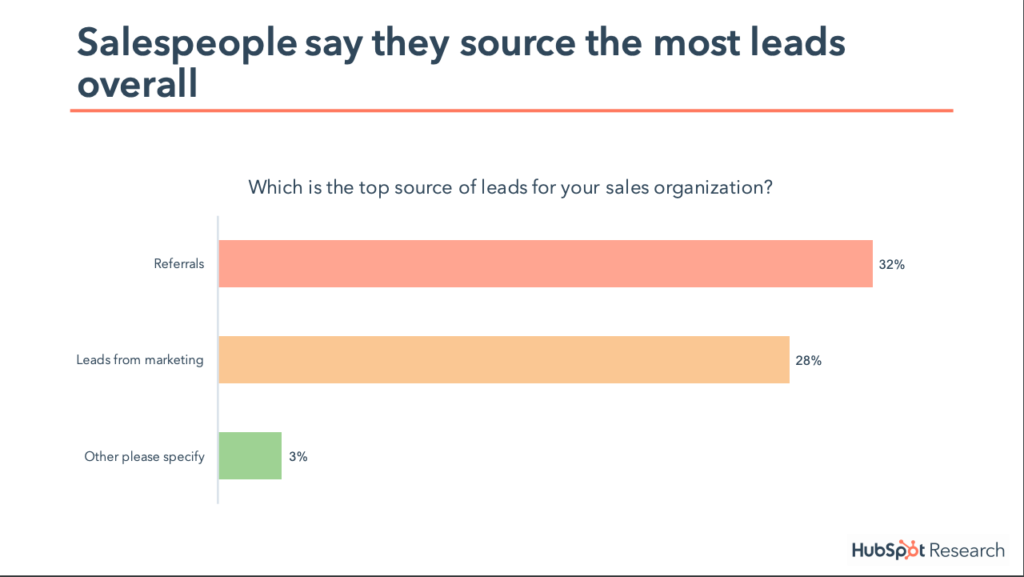
Define your products users vs buyers
It’s very important that you know who your buyers are, and who your users are. They are not always the same people, especially in a bigger business. For example, the buyer of a piece of CRM software may be the CTO or Head of Marketing, but the users may be sales reps or secretaries.
It’s important to engage your users as well as your buyers because even though most users will have little to no buyer power right now. Everyone moves jobs, and generally to a more senior role. If someone has used one piece of software in one company and it worked well, they are very likely to recommend this to a new employer who is looking for a similar solution.
Content Marketing
Sounds too simple. But one of the common problems B2B technology businesses have is that their website doesn’t have enough relevant content on it to be ranking in Google.
The most efficient B2B businesses generate leads through organic search traffic and SEO. This is part of Inbound Marketing. The main reason people don’t produce content is because there is little short term reward for content production. B2B companies who don’t produce enough content will not produce enough low-cost leads.
Blogging for B2B Lead Generation
If you don’t have the time and resources to write and publish content in-house then you can always outsource content. There is a horde of content writers out there with the skills to be able to write relevant content for you.
Most of the time, the first issue with someone trying to hire a content writer or pay someone to write content for a software business is that they don’t understand the sector or technology.
This is where spending a bit more money really helps. A good content writer will spend time researching your industry and your product before they write. There are also writers who specialise in certain sectors.
Here are two for B2B tech:
Account-Based Marketing
As the world is pretty much saturated by marketing messages, it’s difficult to stand out in any field. Being more personal has become more and more difficult and often lots of companies are trying to obtain the same email address or contact information. Account-Based Marketing is a term now being used for this more targeted and personal approach.
What is Account-Based Marketing (ABM)?
Account-Based Marketing is the act of targeting a specific group of companies or accounts with a personalised marketing campaign. This is a common strategy among B2B companies when the value to the business of the account is fairly high.
For example, ABM does not work as well in the B2C sector usually because the value of one customer is not very high.
However, an example of ABM in a B2C company would be a luxury retailer like Christian Dior having a list of it’s High Net Worth clients and having a form of account management where someone would personalise the shopping experience for these high net worth individuals. It will cost them more money to have an employee do this, but the value the customer will spend outweighs this cost, this is the same principle in a B2B Company.
Here is an interesting article on Tatler talking about what goes into High Net Worth shopping now.

Partnership Marketing
There is a strong possibility that you may already have some partnerships in place with companies that sell into the same companies that you do. Usually, this is in the guise of a referral agreement.
The thing that is often missed is the marketing side of the partnership. It can be quite a time-consuming job to manage a partner marketing program, and more often than not a larger B2B tech company will have someone specifically employed to be a partner marketing manager.
There are however some marketing activities you can do in partnership that don’t need a whole lot of time invested. An example would be a joint email to each others database or producing a piece of content that has input from both sides which can be shared to each others audience.
Partnership marketing in B2B tech also has strong ties to SEO as it can a good way to build backlinks from highly relevant and trusted websites.
These sorts of programs do develop as a company grows and the end result is usually some form or officially tiered program that can be paid for with a listing in a directory and also event marketing included as well.
Partnership marketing can be particularly effective for lead generation because you are helping the prospect solve more than one problem. Two birds with one stone comes to mind. This can be a very attractive proposition.
PPC
PPC or Pay Per Click advertising has sometimes had a bad reputation for B2B SaaS Lead Generation. This is mainly because once you have started generating leads through SEO and organic traffic, PPC can seem like a bit of a waste of money.
There is also sometimes the assumption that by doing paid advertising will suddenly provide you with an influx of leads, this is never the case.
There is a place for B2B PPC in your B2B SaaS lead generation strategy, it should be alongside SEO and Content Marketing and it should be highly focused.
The reason a lot of PPC campaigns do not convert or work as well as people wish is because they have either not done enough research into the Keywords they are bidding on and average CPC (Cost Per Click) or they have not optimised their website and click-through links for conversion.
B2B SEO
It is well known that SEO is important. Everyone thinks they are the most relevant to the potential consumer, everyone wants to ranking at the top of the search results for their given product or service.
SEO services are all about getting more traffic to your website. Ideally traffic from people who have the intent to buy your software or service. B2B buyers are often researching a lot before they are at the point of purchase, that’s why SEO services for lead generation usually centre around content marketing.
Link Building for SEO
Google judges a website link like we would judge a personal recommendation. Just like a Policeman giving you directions vs a tourist, the Policeman has a lot more authority so you are more likely to take their direction.
Link building services aim to get links from high authority websites back to your website. The higher the authority, the more difficult the link is to build. For example, the BBC is a well-respected website with lots of links, they have around 320 Million links.
So a link from the BBC to your website would be of great benefit, but very hard to come by – in fact, sites like this rarely link to external sites.
Content Marketing for SEO
Content Marketing is the easiest part of SEO. The idea behind content marketing for SEO is that you optimise the content for 1 keyword, for example, this article is optimised for the keyword “b2b SaaS lead generation”.
You then produce a piece of really useful content (hopefully) – Google will then take into account the content piece by itself and lots of other factors to rank the piece.
Ranking for competitive key terms with content is difficult, ranking for high volume and highly competitive keywords can be difficult without a very authoritative website with lots of backlinks.
How to build a lead generation website
Websites that generate the most leads are the ones that are easiest to use. They have the least amount of friction to buy.
People will always look for the path of least resistance to achieving anything. You need to make it easy for someone to buy from you, or submit their information. This isn’t just about function it’s about information.
Do your users have all the information they need?
Ask yourself, do your users have all the information they need to buy from you. More often than not the response will be “yes, but they need to get in touch if they want a demo so we can customise it to their needs”. You should always be trying to think about how you can get information like that off the phone and onto your website.
5 Questions your website needs to answer
- What are you selling?
- Does it solve the problem I have?
- How does it solve the problem I have?
- How much does it cost?
- How do I get it?
Not all B2B websites answer these questions and depending on what you sell you can argue that you don’t want to specifically answer all these questions because it isn’t part of your positioning or value proposition, but let me give you an example.
Company X sells Enterprise Marketing Software
- What are you selling? Enterprise all-in-one marketing software.
- Does it solve the problem(s) I have? I need all my marketing tools in one place. It needs to be easy to use for multiple people across the business.
- How does it solve the problem I have? A SaaS product that combines multiple marketing tools into one easy to use tool.
- How much does it cost? Depends on your company size.
- How do I get it? Get in touch with a salesperson.
Now there are 2 points of friction here. 1) I can’t get a price unless I get in touch 2) I need to speak to someone to find out how I can get the software.
Whether or not this is a big problem for you actually depends on your competition, what is the relative ease of use of your competitors? If someone selling a similar product offers a Free Trial that you can sign-up online for free then you are likely going to struggle, but if your competitors are doing the same thing then it may not be a big problem, yet.
Best Lead Generating Websites
It’s difficult to know how well a website works in terms of lead generation unless you are actually on the inside of the business.
Design and look of a website does not always correlate to great lead generation. Sometimes a website can look pretty awful but generate a lot of leads. Although we can’t know how many leads a website makes, we can estimate how much traffic it is getting by looking at an SEO analysis.
If your website has useful and SEO optimised content but looks a bit outdated, your likely to get more leads in the long run than a brand new website that has very little content on it.
B2B Digital Marketing
The role of digital marketing or growth marketing managers in a b2b business is to generate leads. The problem is there is a lot to look after and sometimes you just don’t have time to do everything, you also can’t be a specialist in everything you need to be. This is where a B2B Digital Marketing Agency can come in.
At Clarity Performance we help marketers who don’t have the time or expertise themselves to generate more marketing qualified leads. As a Digital Marketing Agency based in London, we come across a lot of B2B tech businesses all struggling with the same issues.
Reporting on lead generation
So after generating all those great leads, you need to produce a report to prove the return on investment for the rest of the business.
Assuming you have set up your CRM system and marketing software correctly and you are tracking everything you need to then reporting should be easy. Reporting becomes difficult when the work beforehand hasn’t been done correctly.
The metrics that you should be reporting on:
- How much was spent on lead generation
- How much was spent on each channel
- What was the cost per lead overall
- What was the cost per lead for each channel
- How many leads in total
- How many leads per channel
- How many MQLs
- How many SQLs
- How Many Opportunities
- % of leads are MQLs
- % of SQLs to Opportunities
Conclusion
Leads are the fuel for a growing B2B technology business. Without it, you’ll never go anywhere. Whether you work in a SaaS business or not, leads are leads. The best way to generate leads for your business is:
- Know your customer
- Target them
- Reduce the friction to buy
- Empower customers to refer new business
